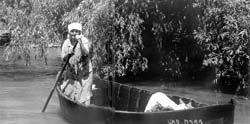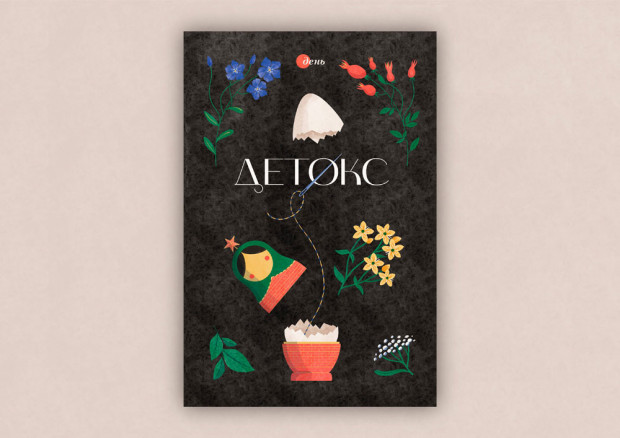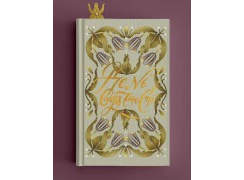The land of frightened birds

I cannot forgive myself for the fact that during my 40-year career as a reporter, having walked and driven to every corner of Ukraine, I never got around to visiting the mouth of the Danube, one of the most blessed nooks in our country. So now, during these short winter days, I seem to be making up for this gap in my life by reading and rereading the book In the Lap of the Danube by the well-known Ukrainian journalist and writer Volodymyr Stadnychenko, recently published by Krynytsia.
When I received this book as a gift from the author, my former editor at Robitnycha hazeta and good friend, I decided I would immediately write a review. But this “immediately” took a very long time because it is difficult to fathom instantly all the depth and wisdom of this work. It is so full of unique and largely unknown information, and the writer displays so much feeling and love in choosing his words, images, and comparisons to express all that he has witnessed, lived through, and been enchanted with that willy-nilly you begin to succumb to this charm. Over and over you want to return to passages you have just read in order to relish the music of the high ringing voices of the marshes and their inimitable and fabulous beauty, as well as the exalted poetry of the Ukrainian word in which this poem in prose is written.
“...Will your heart not thump when on a day in May you suddenly see a winding wave running on top of the reeds in complete silence and windless peace? This means that down below, on a trail well tamped by little bony hooves, a cautious wild sow is leading a live chain of striped piglets to a feeding place, or a tremulous roe deer is carefully making its way, stopping at every other step, or a forest cat is almost inaudibly padding on a plexus of white roots. Streaking up and down the delta’s boundless expanses of air are solemn pelicans, the wild geese that are so fond of water chestnuts, gracious, mute swans, long-legged glossy ibises, unruffled white herons, ubiquitous cormorants, and ducks of all species and colors. On the bar — an offshore ridge of sand — you can see more than just a dozing spiny turbot. Common, beluga, and stellate sturgeons spawn in the lower delta’s protected area, and if you are lucky, at least once in your lifetime you will come across a sad- looking monk seal, not a mythical specter but a real animal on the IUCN Red List of Threatened Species.”
This is not about some foreign exotica. It is about our own Ukrainian one: part of Odesa Oblast or, to be more exact, the Danube Delta Biosphere Reserve. Many of us are probably totally unaware of its potential, which is indeed unique. This area is home to nearly a hundred species of fish and almost as many species of all kinds of animals, and 950 species of plants. There is no other area in Ukraine that is richer in wildlife — and there may never be another one, despite the fact that this second-longest (2,960 km) river in Europe, which flows across 11 countries, embraces more than 80 million people in its basin, and takes into its lap the waters of over 40 smaller rivers, is polluted with so many kinds of manmade waste that it is difficult to understand who is more to blame. But the animals, birds, and fish cannot find a better place and are seeking shelter right here, in the estuary of this legendary blue artery of Europe.
But the poor creatures do not always find it easy and sweet here. Every now and then, unwelcome guests armed with sophisticated rifles invade on their speedboats. Both local and visiting poachers prowl at night: given the current mass unemployment and skyrocketing prices, this may be the only way to keep one’s head above water.
Yes, man has always taken from nature. But whereas earlier this was confined to reasonable limits — finding means of subsistence — today everything that surrounds us — water, forests, wildlife, and minerals — is becoming a source of profit in order to satisfy egotistical cravings and whims. The classical fishing rod or net no longer suit us: we are rushing into blue lagoons and straits with an infernal machine called an electric decoy, which kills all living things around it. Under a flimsy pretext and with the knowledge of local authorities, we are felling many hectares of groves nurtured by previous generations. We shoot at white swans.
Danube Delta Reserve employees, who with great effort — almost manually — have been restocking the population of the endangered white-tailed eagle, once found the dead body of this rare bird in the trunk of a hunter’s car. “It was for the thrill of it!” he explained.
Now this reserve has come into the cross-hairs of state-level poachers. We all remember a front-page story from five years ago, when Ukraine’s Ministry of Transport made the unprecedented decision to dig a Danube-Black Sea navigable canal through the reserve’s territory. Lobbyists for this environmentally-disastrous idea were insisting that the canal run through the Bystre mouth, the nucleus of the reserve. They claimed that it was the most cost-effective, convenient (for whom?) and speedy option, and that up to 60 percent of the total Danube cargo flow would pass through this canal.
This reckless scheme immediately sparked protests from scientists, experts, and the public. Over a two-month period, May and June 2004, 90 countries of the world sent 6,500 petitions in defense of the Danube Delta Biosphere Reserve. Objections came from UNESCO, the European Union, World Wildlife Fund, Wetlands International, BirdLife International, and other influential European and international civic organizations.
Researchers and experts at the National Academy of Sciences of Ukraine, Kyiv’s National Taras Shevchenko University, the Danube Delta Reserve, and other academic and civic centers proved that the transport ministry’s project was not technically feasible and offered an alternative option of a transportation corridor that would bypass the reserve’s center. This alternate corridor would not only protect local nature from complete destruction, but also keep the future navigable route from silting up (According to the ministry’s project, the canal runs through the static rather than dynamic part of the Danube Delta.)
Alas, these common-sense words fell on the deaf ears of the authorities. Soon President Leonid Kuchma declared publicly, “We have at last begun to do what we should have done long ago, i.e., to clean up the Danube mouth and make the Danube River navigable. This is a direct contribution of our advanced industries, especially transport, to the development of Ukraine’s economy.”
Some time later he solemnly announced on board the ship Khadzhibei, “I hereby order that navigation be restored in the Ukrainian segment of the Danube delta.” The result? All those who had opposed this barbarity turned out to be right: after three heavy springtime floods the canal, excavated in a sensitive environment, was almost completely silted up, and the expected endless flow of ships on the canal never materialized. The chief customer of this misadventure — the state-run enterprise Delta-Lotsman or, to be more precise, its management — not only sank 100 million hryvnias from the state budge in the canal but also got mired up to the neck in financial machinations.
The new transport minister fired the manager of this enterprise, and a criminal case was launched. But what price did the reserve’s director, Oleksandr Voloshkevych, have to pay for this victory of common sense, morality, and justice? He was harassed for months with endless inspections, libel, and threats of physical violence, but he never gave in. His like-minded colleagues also experienced a number of unpleasant incidents. The book’s author, Stadnychenko, also ran into trouble when he published highly- critical articles in Dzerkalo tyzhnia, Robitnycha hazeta, Demokratychna Ukraina, and other periodicals. He was the one who publicly warned the chief and “omnipotent” creator of the reckless canal scheme that he would never be able to expiate his sin before the Danube Delta Reserve and Ukrainian nature for the rest of his life.
But In the Lap of the Danube is not just about terrible and sad things. The author speaks with affection about the people who are devoting all their efforts to protecting this unique nook of nature, revitalizing, and studying the flora and fauna.
“Olena Voloshkevych and nature in the Danube area are a single, undivided, manifestation of life. Olena herself was born of the grasses, dew, and water in the beautiful Danubian town of Vylkove,” as Stadnychenko penetratingly characterizes the young hydrobiologist employed at the reserve. He reverentially describes all the other fine people who found their vocation in serving this Ukrainian nature sanctuary: deputy director and chief hunting supervisor Vasyl Fedorenko and his loyal assistants Oleksandr Zubrytsky, Viktor Strelchenko, the brothers Vasyl and Oleksandr Sylarin, Yevhen Lesyk, and Yurii Yemelchuk, inspector Iryna Vykhrystiuk, chief ornithologist Mykhailo Zhmud, chief ichthyologist Kostiantyn Balatsky, botanist Olena Zhmud, and many others whom the author extols as “knights of the Danube, angels of the environment.”
In the Lap of the Danube is a multifaceted, scientifically and ph ilosophically well-grounded, and beautifully designed book. It is an encyclopedia of one of our most hallowed nature nooks, illustrated with hundreds of excellent photos taken by the author, the prominent nature photographer, Vasyl Klymov, and amateur wildlife photographer Andrii Matveiev. Thus, one can only rue the fact that this book, “published at the request of the birds and beasts, forests and rivers, seas and skies of our Ukraine,” should have a circulation of a mere thousand copies, while everyone who has ever seen this Danubian wonder as a researcher, tourist, or guest, would surely want to acquire a cope.
“A flower can only beg for mercy. And her strength lies in her defenseless beauty.” In this philosophically subtle way Stadnychenko interprets the almost invisible and fragile dependence of the environment on humans. We must always try to hear this entreaty and remember our high vocation to preserve what we have.
The Kyiv branch of the National Union of Ukrainian Journalists has nominated Volodymyr Stadnychenko’s book In the Lap of the Danube for the Ivan Franko Prize for Journalism.






